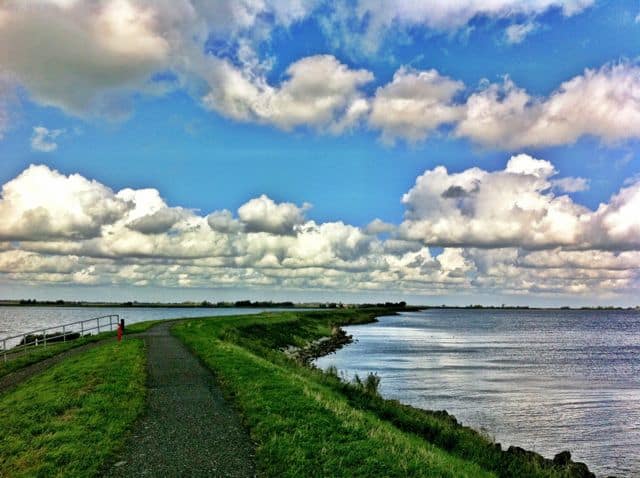Maybe it’s just me. But if I lived in a very low-lying area that required extensive levees to even make living there even possible, and I had to make the levees out of soil because it was what I had the most of, I sure would cover that earth wall with fencing or rip-rap or something that burrowing animals couldn’t dig through. At least below the water line where I couldn’t see it. An ounce of prevention, you know, is worth a pound of cure. Or any amount of GPS.
Doesn’t that seem relatively straight forward?
Study of behaviour muskrats, coypus and beavers kicks off
 In a new study just launched by a number of Dutch district water boards and knowledge institutions, a team of scientists including statistical ecologist Emiel van Loon of the UvA Institute for Biodiversity and Ecosystem Dynamics will be researching the behaviour of muskrats, coypus and beavers. The two-year project is titled ‘Dyke Diggers in Focus’.
In a new study just launched by a number of Dutch district water boards and knowledge institutions, a team of scientists including statistical ecologist Emiel van Loon of the UvA Institute for Biodiversity and Ecosystem Dynamics will be researching the behaviour of muskrats, coypus and beavers. The two-year project is titled ‘Dyke Diggers in Focus’.
standing of beavers’ behavioural patterns and territorial use, meanwhile, would make it easier to detect beaver damage and perhaps even ‘steer’ them away from burrowing in dykes.

To gain a clearer picture of these ‘dyke diggers’, the research will use transmitters equipped with GPS location and activity sensors. The project’s strength lies in pairing of science with practical techniques, with a hands-
Digging in banksides and dykes by muskrats, coypus and increasingly also beavers is causing significant safety risks, economic damage and structural maintenance expenditures in the Netherlands, where flood control is a constant concern. While capturing muskrats and coypus remains as important as ever, better insight into these rodents’ habits may enable faster and more targeted detection and ultimately allow a reduction in not only the number traps that are deployed, but also unintended by-catch and the needless killing of animals. Improved underon component for students, too. Use of this new technology will enable district water boards to answer the pressing question of how to prevent waterside damage through practical insight into the behaviours and territorial use of muskrats, coypus and beavers in the Netherlands. In future, the new technology will also be available to track and study other animals.
Emiel van Loon has been engaged to advise on the design of the experimental transmission component and will focus on questions such as how many animals should be tagged with trackers and where they should be captured. Additionally, Van Loon will be responsible for interpreting the tracking data and creating and validating the movement models to for example predict the use of space for the whole animal populations.
Nothing gives the whiff of modern science that air of prestige like saying it has GPS tracking. Science nerds just go crazy for that, (it’s like labeling anything retail with the words “bluetooth enabled”). People will be more likely to buy it whether it’s useful or not. Far be it from me to make fun of the vividly named Dr. Van Loon or question usefulness of putting a chip inside beaver heads to “STEER THEM AWAY” from burrowing into a wall, but tell me this. If they don’t burrow into your dykes, where are these creatures going to sleep instead?
Maybe creating a floating safe zones that would appeal to these animals would be more useful than this GPS thing? You know, some where to hole up and escape too or for a family to raise its young. Oh and use a couple of those graduate students to find out why no one can tell these species apart will you? Just sayin’.

I just got word from Carol Evans of a wonderful presentation she will be doing with rancher Jon Greggs to talk about their awesome work with restoring sage lands with beaver January 30th, 2018. The conference is mostly about ranching, but their part will be in the morning starting at nine. I have such respect for this work. Carol goes right into the lion’s den to deliver her message. You can sign up here.
This is an FYI as some of you have expressed an interest in hearing about the material Jon Griggs and I will be sharing at the National Society for Range Management meeting in Sparks, NV. I’ll be talking a lot about the effects of managed grazing and beaver colonization on valley re-hydration in the Susie and Maggie Basins. Jon will also be sharing his perspectives on all of this.






































